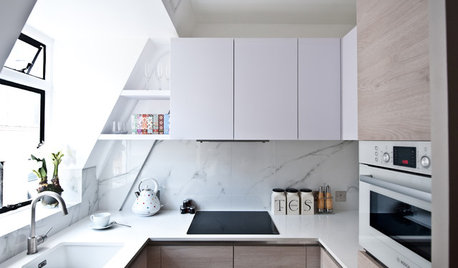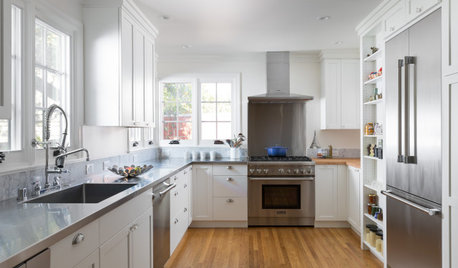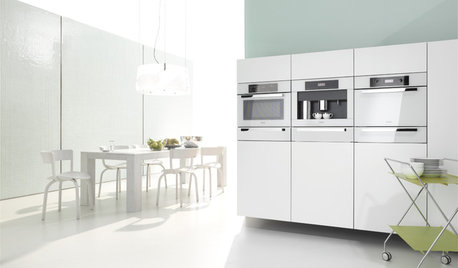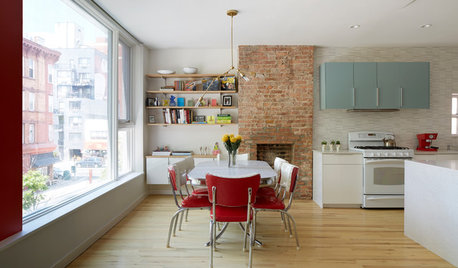GE Profile Chimney Hood Drafty
jsurpless
10 years ago
Related Stories

KITCHEN DESIGNHow to Choose the Right Hood Fan for Your Kitchen
Keep your kitchen clean and your home's air fresh by understanding all the options for ventilating via a hood fan
Full Story
KITCHEN DESIGNHow to Find the Right Range for Your Kitchen
Range style is mostly a matter of personal taste. This full course of possibilities can help you find the right appliance to match yours
Full Story
THE HARDWORKING HOMESmart Ways to Make the Most of a Compact Kitchen
Minimal square footage is no barrier to fulfilling your culinary dreams. These tips will help you squeeze the most out of your space
Full Story
HOUSEKEEPINGHow to Clean Stainless Steel
Protect this popular kitchen material with a consistent but gentle cleaning routine
Full Story
KITCHEN DESIGNWhite Appliances Find the Limelight
White is becoming a clear star across a broad range of kitchen styles and with all manner of appliances
Full Story
TOWNHOUSESHouzz Tour: Color and Light Transform a Brooklyn Townhouse
Bright red and robin’s egg blue accents set off white walls and wood floors in this bright New York family home
Full Story





kaseki
jsurplessOriginal Author
Related Professionals
Ballenger Creek Kitchen & Bathroom Designers · La Verne Kitchen & Bathroom Designers · Montrose Kitchen & Bathroom Designers · North Druid Hills Kitchen & Bathroom Remodelers · Eagle Mountain Kitchen & Bathroom Remodelers · Feasterville Trevose Kitchen & Bathroom Remodelers · Franconia Kitchen & Bathroom Remodelers · Los Alamitos Kitchen & Bathroom Remodelers · Pinellas Park Kitchen & Bathroom Remodelers · Sicklerville Kitchen & Bathroom Remodelers · Sweetwater Kitchen & Bathroom Remodelers · Princeton Kitchen & Bathroom Remodelers · Stoughton Cabinets & Cabinetry · Central Cabinets & Cabinetry · Milford Mill Cabinets & Cabinetrykaseki
jsurplessOriginal Author